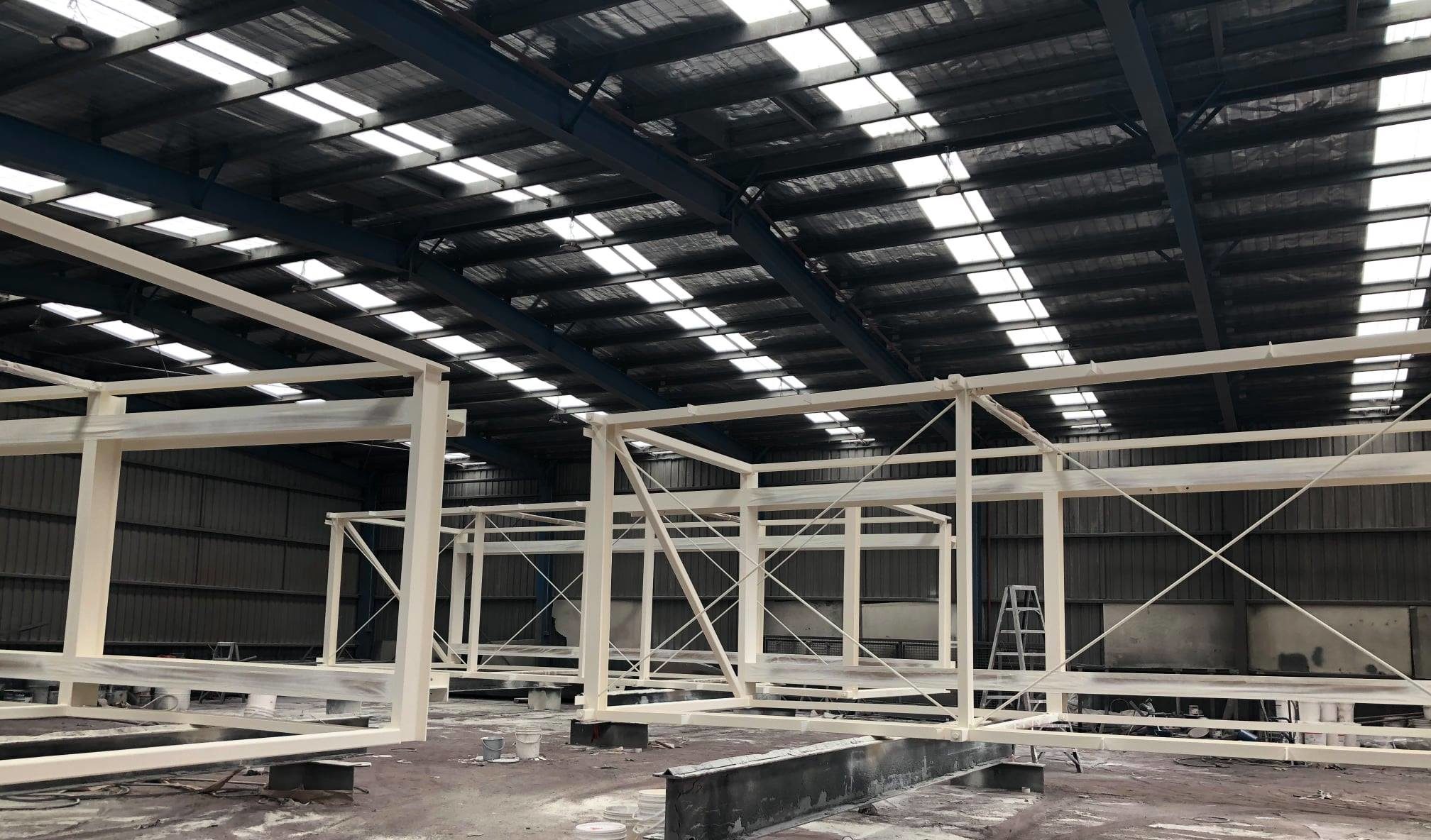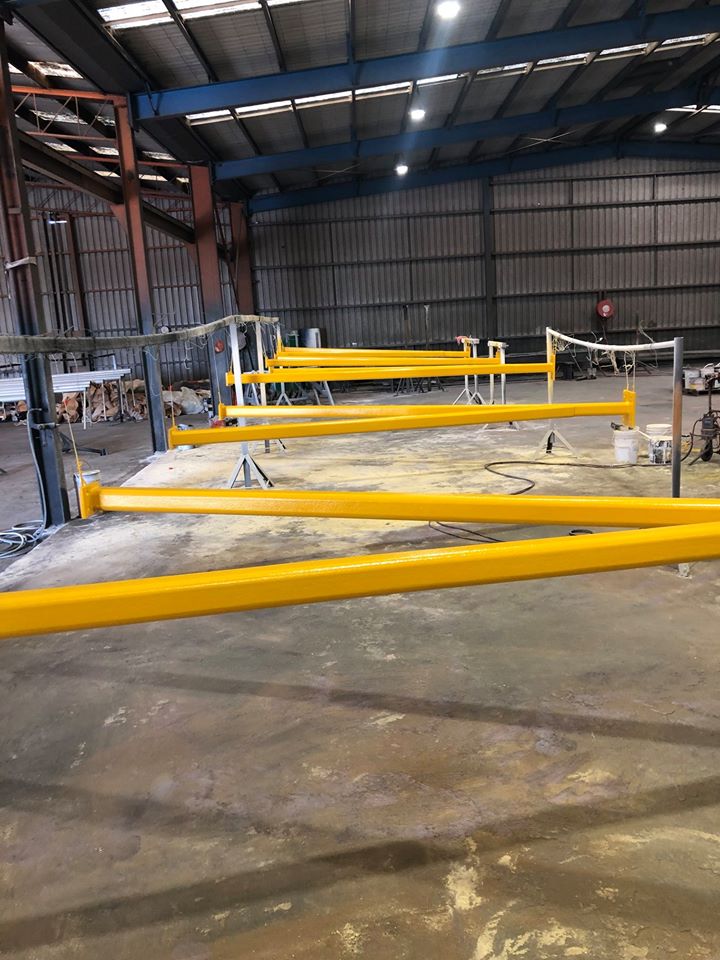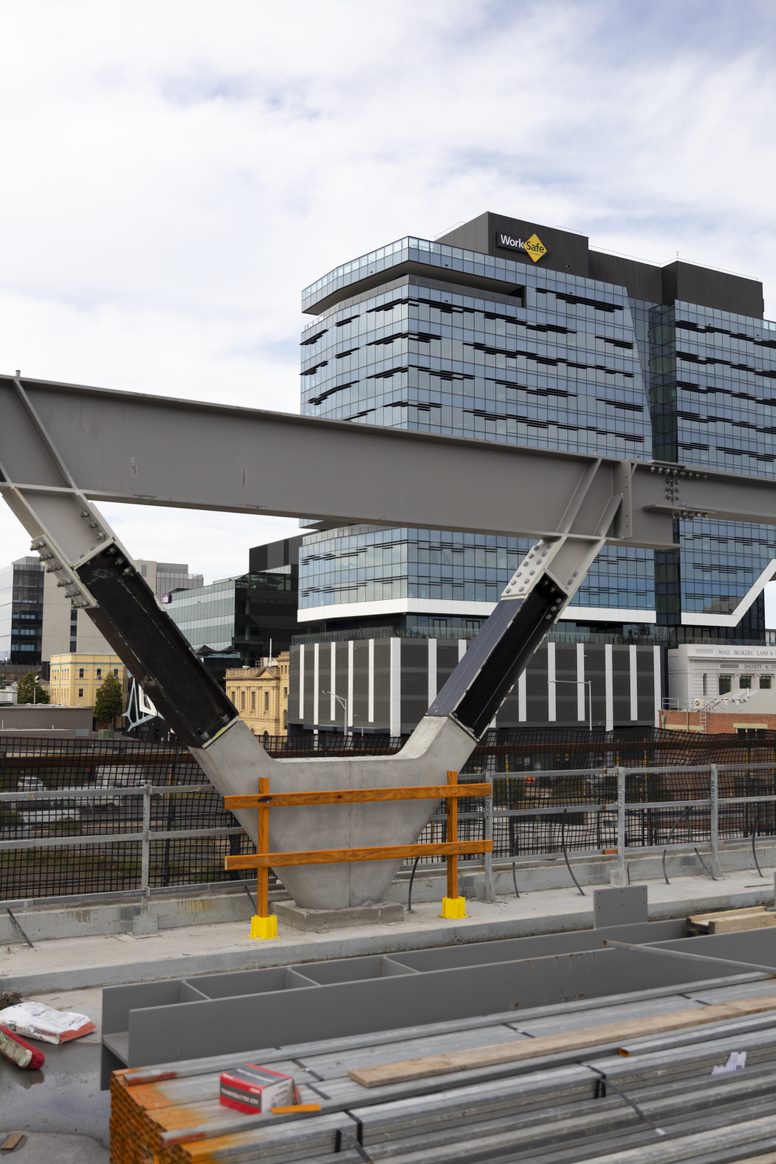


We will work with you during the design phase of your project to determine an optimum time frame to apply your intumescent coatings. Onsite application of intumescent coatings is often the default choice of many architects and contract managers. Depending on the fire-resistance level (FRL) required, onsite application of intumescent paint can take between four to seven days. Weather can also be a variable and there are OH&S elements to consider during the application. An offsite coating may be preferable for modular-style builds. Talk to our team to discover what will best suit your project.
Designed specifically for the coating of structural steel, intumescent paint swells when exposed to high heat. Once temperatures exceed 200°C, the protective intumescent film chars providing up to 120 minutes of fire protection. It has a low odour and is a water-based formulation that may be considered safer for internal environments than solvent-based paints.


A paint-like coating with a 0.25 to 5.0 mm dry film thickness (DFT), it produces a carbonaceous char that acts as an insulating layer to protect the substrate and offers:
The expert team at PROFINISH Fire Protection have an intimate knowledge of fire protection products and can assist you in deciding whether to apply coatings on or offsite.

We design and build projects that stop fire and corrosion, because no one should die in a fire.
Download our capability statement for information on our end-to-end fire protection. Learn more about our design, build and document process.
Enter your details to be sent a copy.
Intumescent paint is a type of fire-resistant coating that swells up when exposed to high temperatures, forming a thick, protective layer that insulates the underlying material from the heat. This layer prevents the spread of flames and buys time for people to evacuate and firefighters to arrive. Intumescent paint is made up of several components, including a binder, an expanding agent, and a flame retardant. When exposed to heat, the binder softens, and the expanding agent creates bubbles that expand the paint. The foam-like layer that forms as a result is an excellent thermal insulator, protecting the substrate from heat transfer.
Intumescent paint can be applied to a wide range of surfaces, including structural steel, wood, concrete, and plasterboard. The surface must be clean, dry, and free of any contaminants before the paint is applied. The thickness of the intumescent coating required depends on the type of material being coated and the level of fire protection required. In general, steel structures require a thicker coating than wood or concrete structures.
The lifespan of intumescent paint depends on several factors, including the type of substrate, the thickness of the coating, and the environment in which it is installed. Most intumescent paints have a recommended lifespan of between 5 and 25 years, but this can vary depending on the conditions. Intumescent coatings on steel structures may need to be recoated more frequently than those on wood or concrete surfaces, as steel can rust over time, compromising the integrity of the coating.
Intumescent paint is generally considered to be environmentally friendly because it is water-based and does not contain any toxic chemicals or heavy metals. The paint is also non-flammable, meaning it will not release harmful fumes or smoke in the event of a fire. However, some intumescent paints contain volatile organic compounds (VOCs) that can contribute to air pollution. To ensure that intumescent paint is as environmentally friendly as possible, it is important to choose a low-VOC product and to apply it according to the manufacturer’s instructions.
The main benefit of using intumescent paint is that it provides passive fire protection, helping to prevent the spread of flames and protect people and property in the event of a fire. Intumescent paint is also relatively easy to apply and can be used to provide fire protection to a wide range of substrates. Additionally, intumescent coatings can be aesthetically pleasing, with some products offering a range of colors and finishes. Finally, intumescent coatings can also provide additional benefits, such as corrosion protection for steel structures.